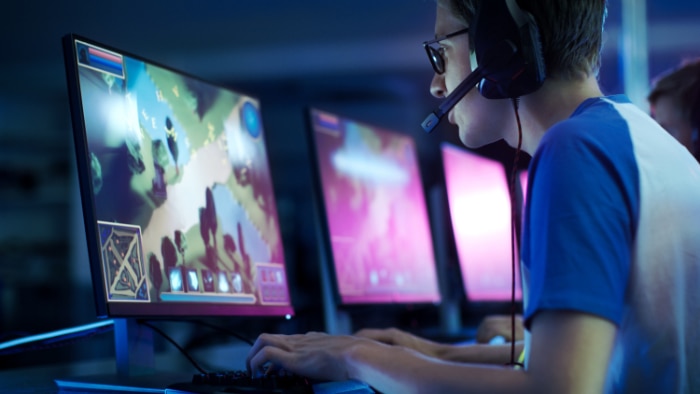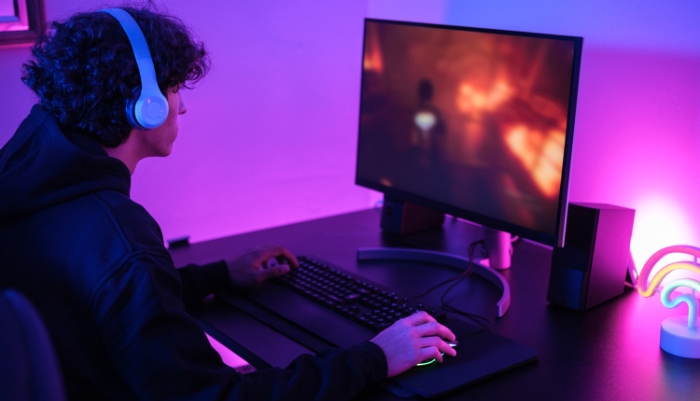What Is GPU Scaling? Ratio Rules

GPU scaling stands as a crucial yet often overlooked aspect of gaming technology. For gamers, the quest for seamless, high-quality graphics is endless, and GPU scaling plays a significant role in this journey.
This technology is not just about enhancing the visual appeal; it’s about transforming the entire gaming experience. Imagine playing an older classic on a modern widescreen monitor without any distortion or a new high-end game optimized to run smoothly on different screen resolutions.
That’s the magic GPU scaling brings to the table.
Basic Concepts of GPU Scaling
GPU scaling is a technology that adjusts the aspect ratio of a game to fit a screen’s resolution, ensuring that graphics are displayed correctly without any distortion. It plays a critical role in enhancing the gaming experience, especially when dealing with various screen sizes and resolutions.
Definition of GPU Scaling
GPU scaling involves the process where the Graphics Processing Unit (GPU) adjusts an image to fit the display’s resolution. This technology is essential when the native resolution of the content does not match the display’s resolution.
In gaming, this ensures that visuals are not stretched or shrunk inappropriately, preserving the original aspect ratio and clarity of the game’s graphics.
Role of the GPU in Gaming
The GPU is responsible for rendering images, videos, and animations in a computer system, making it a vital component for gaming. It processes complex algorithms to generate high-quality visuals, enhancing the overall gaming experience.
In the context of GPU scaling, the GPU adjusts the resolution of games to match the screen, ensuring optimal performance and display quality.
GPU Scaling vs Other Forms of Scaling
Unlike CPU scaling or software-based scaling, GPU scaling is specifically handled by the graphics card. This method typically offers better performance and quality, as the GPU is designed to handle graphical computations efficiently.
While other forms of scaling might affect overall system performance or image quality, GPU scaling is tailored to maintain the balance between display quality and system efficiency in gaming.
Types of GPU Scaling
GPU scaling, a vital feature for gamers, comes in various types, each serving a specific purpose in enhancing gaming visuals. Different scaling options cater to various needs, ranging from maintaining aspect ratios to full-screen stretching.
Aspect Ratio Scaling
Aspect Ratio Scaling is designed to preserve the original aspect ratio of the game, even when played on a screen with a different ratio. Common aspect ratios include 4:3 and 16:9.
When this mode is activated, black bars may appear on the sides (pillarboxing) or top and bottom (letterboxing) of the screen to maintain the game’s original proportions. This type of scaling is particularly important for older games designed for non-widescreen monitors, ensuring they appear as intended without stretching or distortion on modern screens.
Full-Screen Scaling
Full-Screen Scaling stretches the game’s graphics to fill the entire screen, regardless of the original aspect ratio. This mode eliminates black bars but may result in stretched or distorted images, especially noticeable in games with 3D graphics or detailed environments.
Gamers who prefer an immersive, full-screen experience often opt for this setting, accepting some level of distortion for a more enveloping visual.
No Scaling
No Scaling is a straightforward approach where the GPU does not alter the game’s resolution or aspect ratio. The game appears in its native resolution, which may result in unused screen space if the game’s resolution is lower than the display’s maximum.
This mode is typically chosen for its authenticity and is often preferred for games where preserving the original visual experience is more important than utilizing the full screen.
How GPU Scaling Affects Gaming
GPU scaling is a critical component in gaming, primarily influencing the visual aspects of gameplay. While it does not directly enhance game performance in terms of frames per second, it plays a key role in how graphics are displayed, affecting the overall gaming experience.
Impact on Visual Fidelity
- Consistency Across Different Displays: GPU scaling ensures that a game’s visuals remain consistent across various monitor sizes and resolutions. This is crucial for maintaining the intended visual experience regardless of the hardware used.
- Aspect Ratio Management: It helps manage different aspect ratios, preventing image stretching or squashing, which is vital for preserving the aesthetic integrity of games, especially older titles designed for specific aspect ratios.
Effect on Older vs. Newer Games
- Older Games: For older games not designed for modern widescreen formats, GPU scaling is essential to adapt these games to current displays without compromising their original appearance.
- Newer Games: Most modern games are developed with a variety of display resolutions and aspect ratios in mind, reducing the need for extensive GPU scaling while still benefiting from its ability to fine-tune the display.
Limitations and Considerations
- No Increase in Frame Rate: It’s important to note that GPU scaling does not increase the game’s frame rate. Its role is confined to adjusting the game’s display to fit different screen resolutions and aspect ratios.
- Potential Impact on Image Quality: Depending on the scaling method used, there can be a trade-off between maintaining the original aspect ratio and utilizing the full screen area, which might affect the game’s image quality.
Setting Up GPU Scaling for Gamers

Proper setup of GPU scaling is essential for gamers looking to optimize their gaming experience. This process involves adjusting settings within the graphics card software to match individual gaming needs and hardware capabilities.
Enabling GPU Scaling
- Accessing Graphics Card Settings: Gamers need to access their GPU’s control panel. This is typically done by right-clicking on the desktop and selecting the graphics card software (e.g., NVIDIA Control Panel or AMD Radeon Settings).
- Locating Scaling Options: Within the control panel, navigate to the display or video settings section where the scaling options are located.
- Activating GPU Scaling: Select the GPU scaling option and choose the desired scaling mode (e.g., Aspect Ratio, Full-Screen).
Adjusting Settings for Different Games
- Customizing for Game Type: The scaling mode may vary depending on the game. For instance, older games might benefit more from Aspect Ratio scaling, while newer games might look better with Full-Screen scaling.
- Testing and Tweaking: It’s advisable to test the game after adjusting the settings. If the visuals don’t appear as expected, tweak the settings until the desired outcome is achieved.
Compatibility with Graphics Cards and Drivers
- Graphics Card Specifics: Different graphics cards might have different options for GPU scaling. It’s important to be familiar with the specifics of the card in use.
- Driver Updates: Keeping graphics card drivers up-to-date is crucial. Updated drivers often enhance compatibility and performance, and may also introduce new scaling options or improve existing ones.
Additional Configuration Tips
- Monitor Settings: Apart from GPU settings, monitor settings might also need adjustment to align with the GPU scaling options.
- Resolution Considerations: Be mindful of the game’s native resolution and how it compares to the monitor’s resolution. This awareness can guide the scaling settings for optimal results.
Pros and Cons of GPU Scaling in Gaming
GPU scaling is a double-edged sword in the realm of gaming. While it offers significant benefits in terms of display adaptability and enhanced gaming experiences, it also comes with its own set of drawbacks.
Advantages of GPU Scaling
- Enhanced Compatibility: GPU scaling allows games, especially older titles, to be compatible with modern widescreen displays, preventing issues like stretching or squashing of the game’s visuals.
- Improved Visual Experience: By maintaining the correct aspect ratio, GPU scaling ensures that the game’s graphics are displayed as intended, preserving the artistic integrity of the game.
- Flexibility in Display Options: It offers flexibility, allowing gamers to choose between different scaling modes based on their preference for either maintaining the original aspect ratio or enjoying a full-screen experience.
Disadvantages of GPU Scaling
- Potential for Lower Image Quality: Depending on the scaling mode chosen and the original resolution of the game, GPU scaling can sometimes result in lower image quality, such as blurred textures or pixelation.
- Performance Impact: While GPU scaling itself doesn’t directly affect frame rates, mismatched resolutions can potentially strain the GPU, indirectly impacting game performance.
- Limited by Hardware Capabilities: The effectiveness of GPU scaling can also be limited by the capabilities of the graphics card and monitor, with some older hardware struggling to effectively scale certain resolutions or aspect ratios.
Balancing Act in GPU Scaling
- Choosing the Right Mode: Gamers need to strike a balance between visual fidelity and the potential impact on performance. The choice of scaling mode should consider both the game’s requirements and the hardware’s capabilities.
- Understanding Game Requirements: Some games benefit more from certain types of scaling than others. For instance, older 2D games might fare better with aspect ratio scaling, while modern 3D games might be more adaptable to full-screen scaling.



